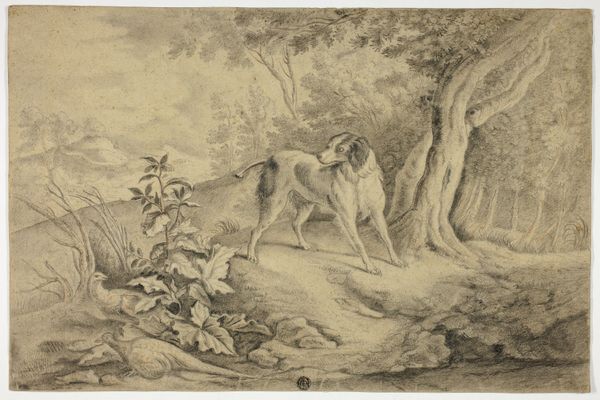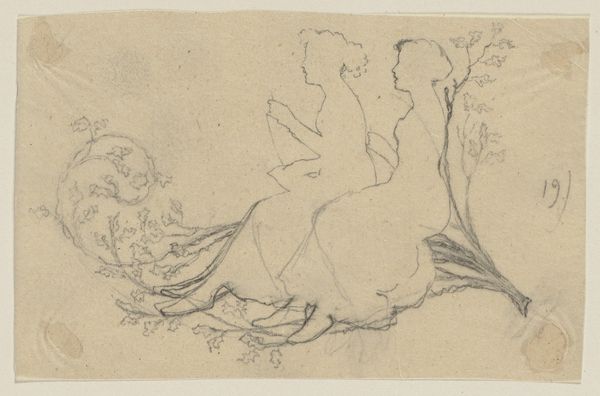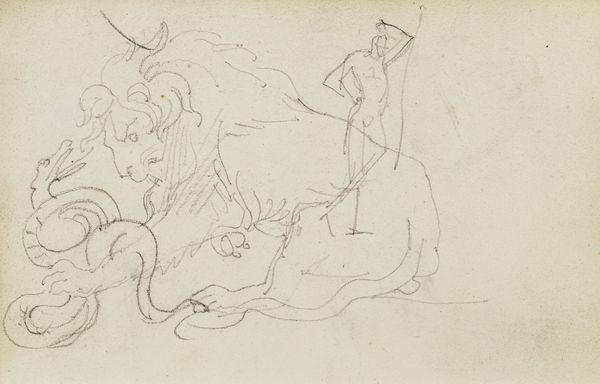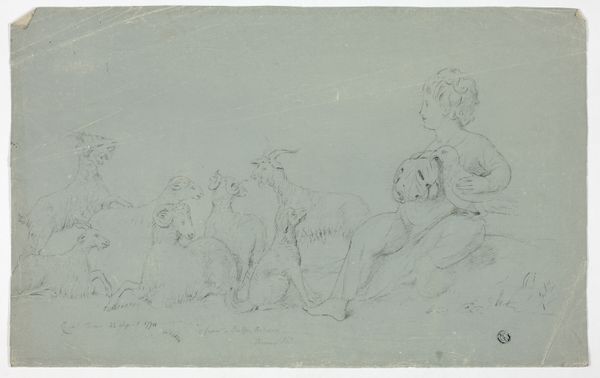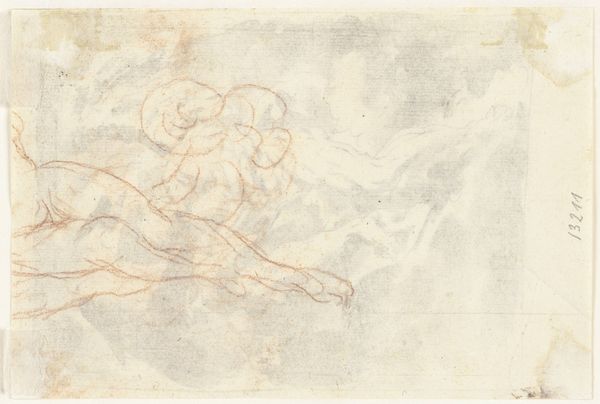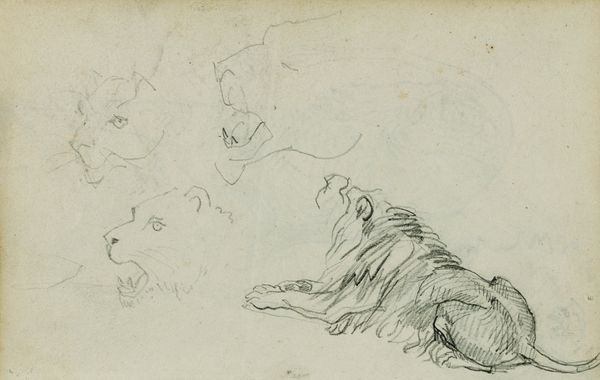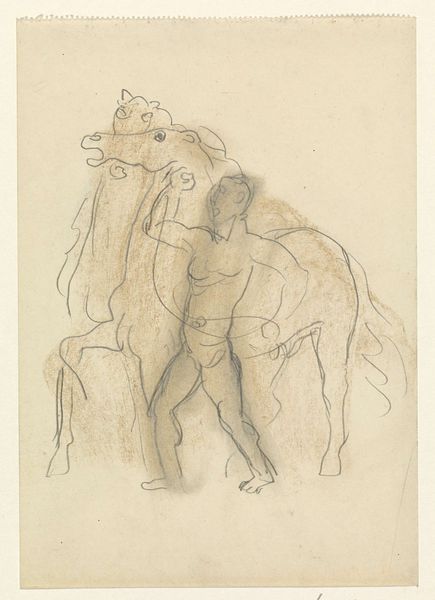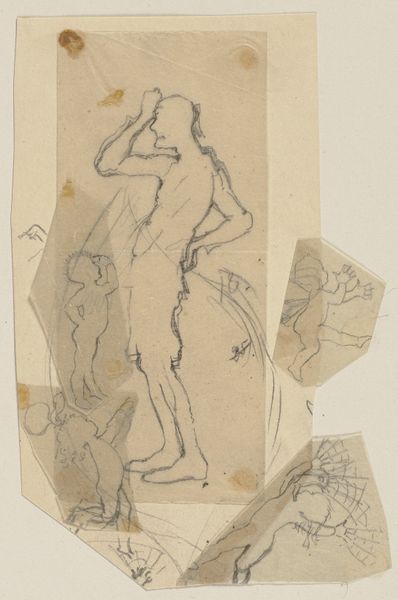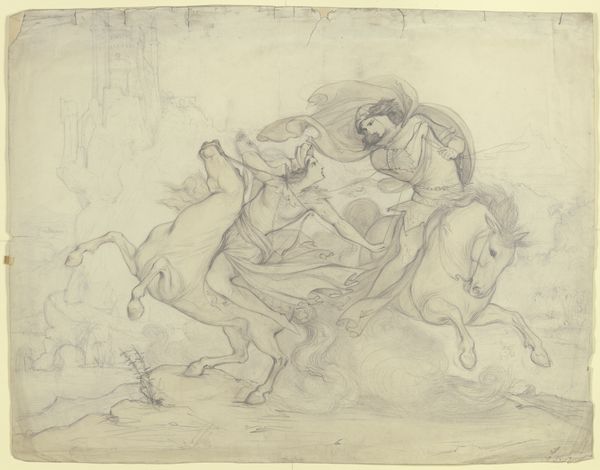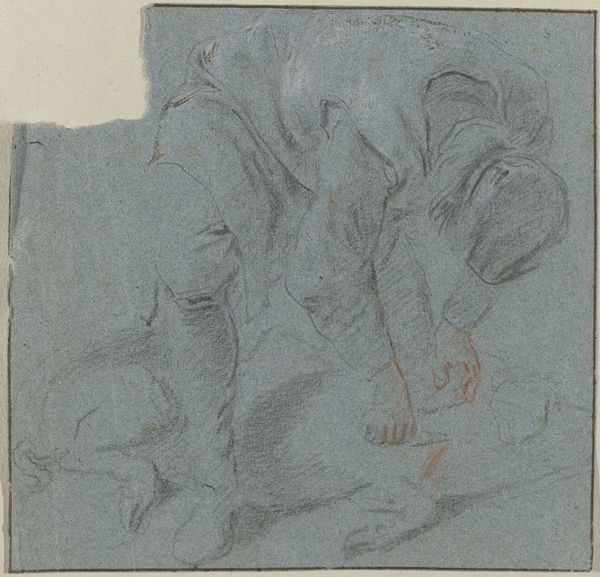
cardboard, drawing, paper, dry-media, pencil
#
cardboard
#
portrait
#
pencil drawn
#
drawing
#
toned paper
#
16_19th-century
#
pencil sketch
#
figuration
#
paper
#
dry-media
#
german
#
romanticism
#
pencil
#
academic-art
#
nude
Copyright: Public Domain
Curator: Before us we have "Zwei Amoretten unter einem Baum sitzend", or "Two Cupids Sitting Under a Tree", a work on cardboard by Eugen Klimsch, residing here at the Städel Museum. The date is, unfortunately, unknown. Editor: Well, even in this somewhat preliminary state, it breathes a peculiar sort of air—an intimacy that feels both classical and fragile, achieved solely with pencil on toned paper. Curator: Absolutely. Note Klimsch's handling of line and form; the chiaroscuro is subtly rendered, isn't it? The composition adheres to an almost academic precision, with the figures arranged in a balanced, harmonious manner. Editor: But what interests me more is the labour evident in such drawings. Consider the pencils used, perhaps made from graphite sourced and refined with skill. Paper production in the 19th century was already an elaborate process— transforming raw materials into a receptive ground for Klimsch’s ideas. Curator: A fascinating perspective. Although I would say that while process informs the piece, Klimsch’s focus is arguably on conveying idealized beauty through the nude figure— a very traditional aspiration of art. Notice the rendering of the infant musculature, for instance, and the carefully observed anatomy even within a preliminary work. Editor: Still, it's hard to ignore that these aren't simply ethereal beings. Their bodies, however idealized, are represented through tangible materials shaped by human hands and industrial processes. And what about the toned paper; doesn't the very coloration of the ground influence our perception of the pencil strokes? Curator: Indeed, the interplay of line and ground, as well as the thematic interplay of Eros and Nature, elevate the piece. One might see it as an embodiment of Romantic sensibilities filtered through an academic lens. The tonal unity of the drawing creates a gentle atmosphere of serenity. Editor: Right—and considering that unity as an artifact of material coming together, we can contemplate what choices were deliberately left "unfinished", giving insights into studio process. It also prompts us to look at the piece as an exchange with a social setting— where artistic production and available materials mutually shape one another. Curator: An insightful connection. Klimsch certainly provides ample opportunity to engage on numerous levels with the rich textures of history. Editor: Precisely. It's a lovely reminder that behind the beautiful surfaces lie stories of labour, resources, and exchange.
Comments
No comments
Be the first to comment and join the conversation on the ultimate creative platform.
